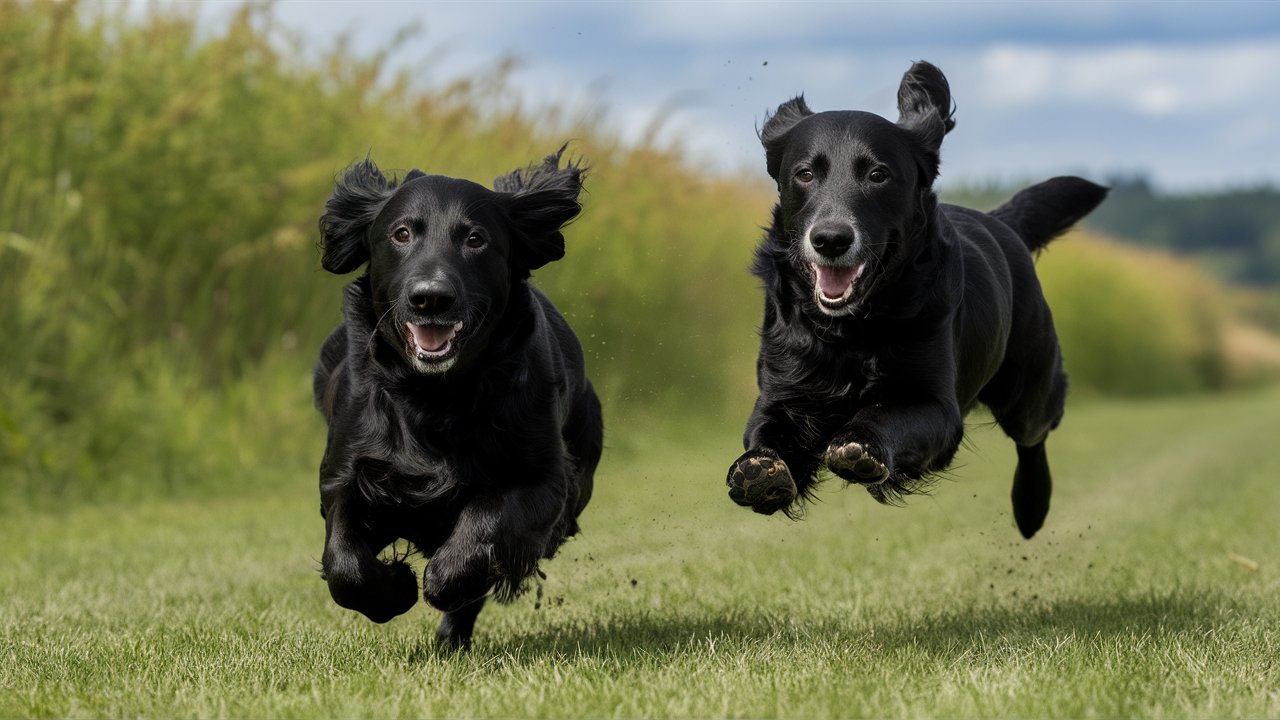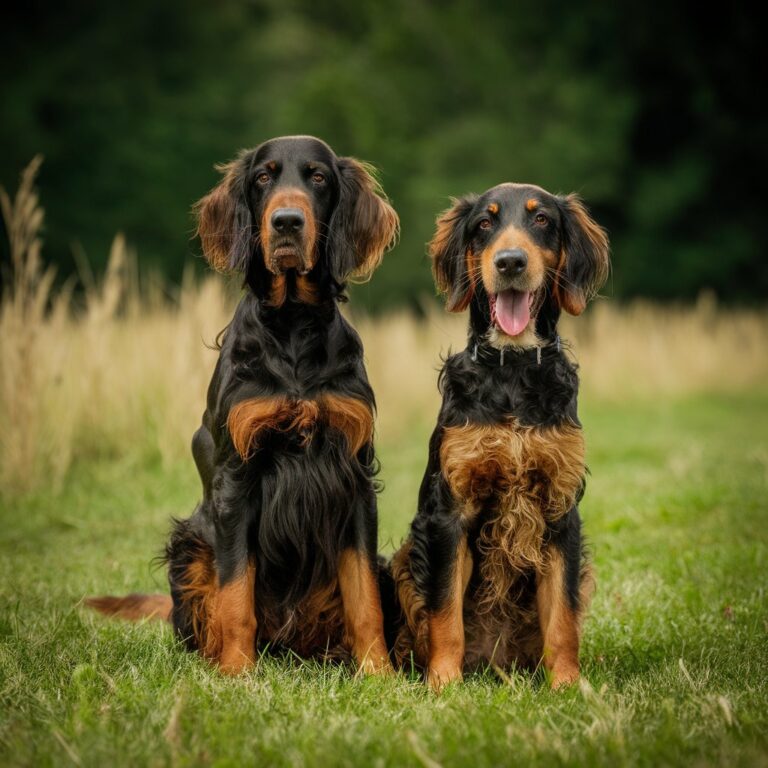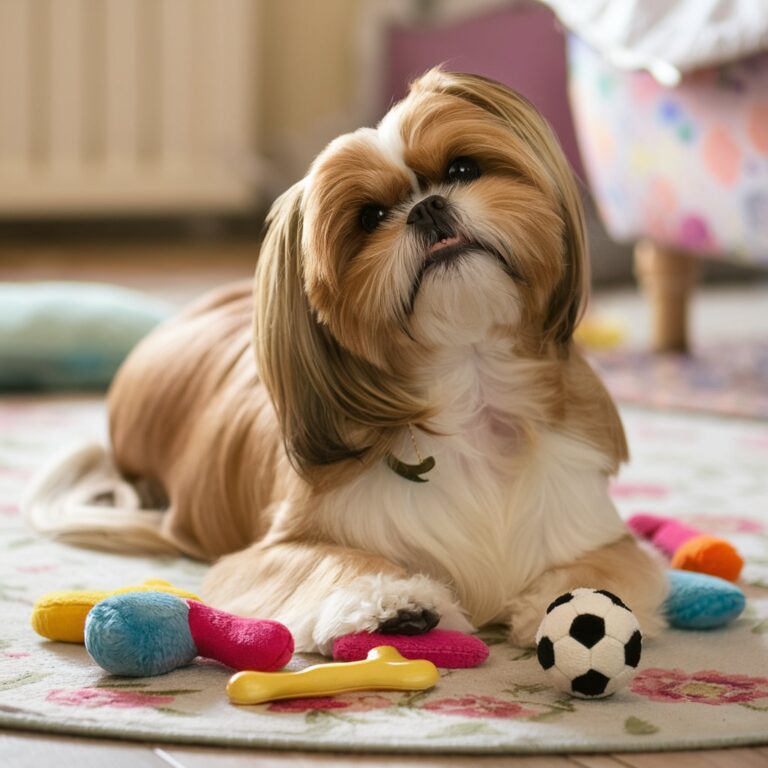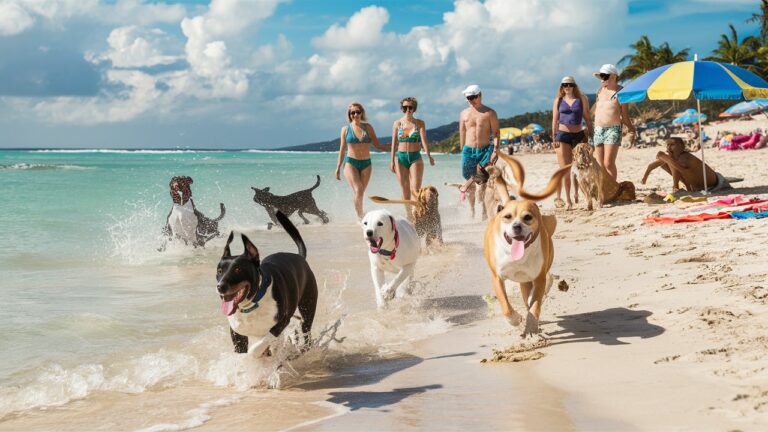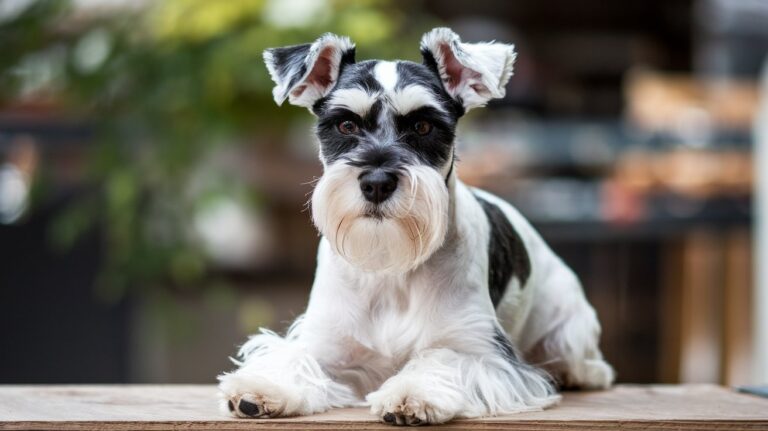Flat-Coated Retrievers:100% Comprehensive Guide to Happy, Versatile Companions
Flat-Coated Retrievers, often referred to as the “Peter Pan” of dog breeds, are known for their eternal puppy-like enthusiasm and joyful disposition. Originally bred for hunting and retrieving game, these dogs have become cherished family pets, therapy dogs, and show champions. This article aims to provide an in-depth look at the Flat-Coated Retriever, covering their history, characteristics, care requirements, training tips, and more.
History of the Flat-Coated Retriever
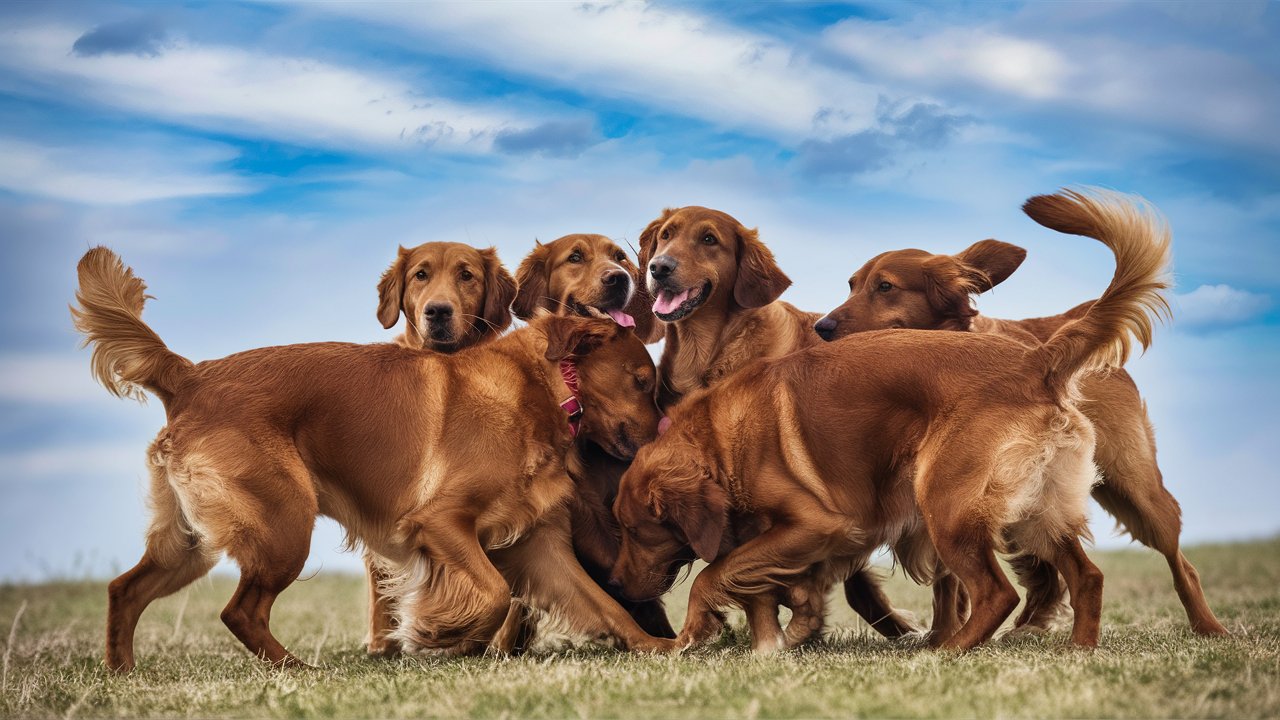
Origins
The Flat-Coated Retriever originated in the United Kingdom in the mid-19th century. They were developed by crossing various breeds, including the now-extinct St. John’s Water Dog, the Labrador Retriever, and possibly the Newfoundland. The goal was to create a versatile retriever that excelled in both water and on land, with a friendly and outgoing temperament.
Development and Recognition
Flat-Coated Retrievers quickly gained popularity among hunters and gamekeepers for their excellent retrieving abilities and easy-going nature. In 1903, the breed was officially recognized by the Kennel Club in the UK. However, their popularity waned in the early 20th century due to the rise of the Labrador Retriever. Thankfully, dedicated breeders revived the Flat-Coated Retriever, preserving their unique qualities and ensuring their survival.
Characteristics of Flat-Coated Retrievers
Physical Appearance
Flat-Coated Retrievers are medium to large-sized dogs, with males typically standing 23-24.5 inches tall at the shoulder and females slightly smaller at 22-23.5 inches. They weigh between 60-70 pounds. Their most distinguishing feature is their shiny, flat-lying coat, which can be black or liver-colored. Their expressive, almond-shaped eyes and friendly demeanor are also hallmark traits.
Temperament
Flat-Coated Retrievers are known for their cheerful and outgoing personalities. They are highly social dogs that thrive on human interaction and companionship. Their boundless energy and playful nature make them excellent companions for active families. Despite their hunting background, they are gentle and affectionate, making them great with children and other pets.
Lifespan and Health
The average lifespan of a Flat-Coated Retriever is around 8-10 years, although some can live longer with proper care. Like all breeds, they are prone to certain health issues, including hip dysplasia, cancer, and progressive retinal atrophy. Regular veterinary check-ups, a balanced diet, and an active lifestyle can help maintain their health and well-being.
Caring for a Flat-Coated Retriever
Diet and Nutrition
Proper nutrition is essential for the health and vitality of a Flat-Coated Retriever. They should be fed a high-quality, balanced diet appropriate for their age, size, and activity level. Puppies require food formulated for growth and development, while adult dogs need maintenance diets. It’s crucial to monitor their weight and adjust their food intake to prevent obesity, which can lead to various health problems.
Exercise Requirements
Flat-Coated Retrievers are an energetic breed that requires plenty of exercise to keep them happy and healthy. They enjoy activities such as running, swimming, hiking, and playing fetch. Regular exercise not only keeps them physically fit but also provides mental stimulation, which is crucial for preventing boredom and destructive behavior.
Grooming
The flat, dense coat of a Flat-Coated Retriever requires regular grooming to keep it looking its best. Brushing several times a week helps remove loose hair and prevents matting. During shedding seasons, more frequent brushing may be necessary. Regular baths, ear cleaning, and nail trimming are also important parts of their grooming routine.
Training a Flat-Coated Retriever
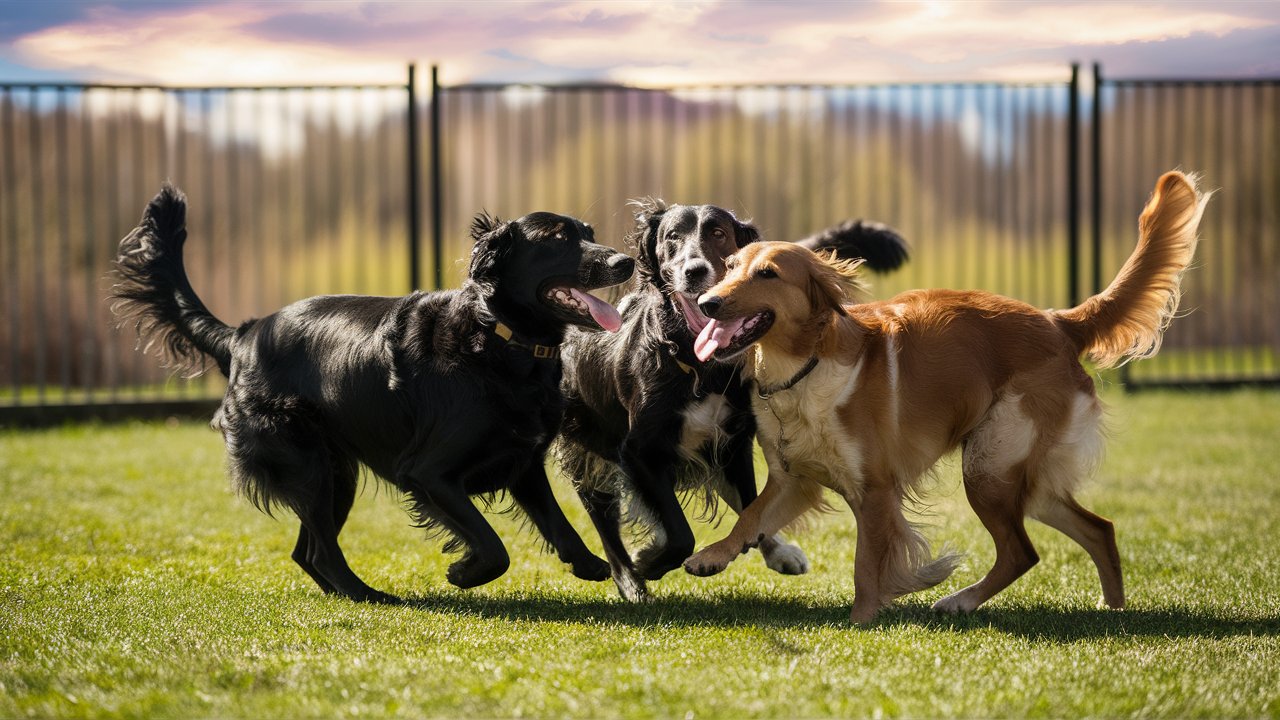
Basic Training
Flat-Coated Retrievers are intelligent and eager to please, making them relatively easy to train. Positive reinforcement methods, such as treats, praise, and play, work best with this breed. Start training early, focusing on basic commands like sit, stay, come, and heel. Consistency and patience are key to successful training.
Advanced Training and Activities
Due to their versatility, Flat-Coated Retrievers excel in various dog sports and activities. They can be trained for agility, obedience, rally, and dock diving. Their natural retrieving ability makes them excellent candidates for field trials and hunting tests. Participating in these activities provides both physical exercise and mental stimulation, strengthening the bond between dog and owner.
Personal Anecdotes and Stories
Life with a Flat-Coated Retriever: A Personal Journey
I still remember the day we brought our Flat-Coated Retriever, Max, home. His boundless energy and infectious enthusiasm instantly brightened our household. From the start, it was clear that Max was more than just a pet; he was a family member.
Max’s playful antics never failed to bring a smile to our faces. Whether it was chasing after a ball in the backyard or gleefully diving into the lake during our weekend outings, his zest for life was truly contagious. His friendly disposition made him a hit with our neighbors and their pets, earning him the nickname “Mayor Max” in our community.
Training Max was a rewarding experience. His intelligence and eagerness to learn made each session enjoyable. I fondly recall our early morning training sessions in the park, where Max would master new commands with ease. His favorite activity, by far, was retrieving. Watching him sprint across the field, ears flapping and tail wagging, was a sight to behold.
A Therapy Dog in the Making
Inspired by Max’s gentle and affectionate nature, we decided to train him as a therapy dog. The process was rigorous, but Max’s calm demeanor and love for people made him a natural fit. He quickly adapted to the structured training and passed the certification with flying colors.
Max’s work as a therapy dog was nothing short of remarkable. Visiting hospitals and nursing homes, he brought joy and comfort to countless individuals. I vividly remember one particular visit to a children’s hospital. A young patient, who had been withdrawn and unresponsive, lit up the moment Max entered the room. The bond they formed in those few minutes was profound, illustrating the incredible impact dogs like Max can have on people’s lives.
Common Health Issues and Preventative Care
Understanding Health Risks
Flat-Coated Retrievers are generally healthy, but they are predisposed to certain conditions. Cancer, particularly hemangiosarcoma and lymphoma, is a significant concern in this breed. Regular veterinary check-ups and early detection are crucial in managing these health issues.
Hip dysplasia is another common problem, affecting the hip joints and causing pain and mobility issues. Responsible breeding practices and maintaining a healthy weight can help reduce the risk of hip dysplasia. Additionally, progressive retinal atrophy (PRA) can lead to vision loss. Regular eye examinations by a veterinary ophthalmologist are recommended to monitor and manage this condition.
Preventative Care Tips
- Regular Vet Visits: Schedule annual check-ups and vaccinations to ensure your Flat-Coated Retriever remains in good health.
- Balanced Diet: Provide a high-quality diet tailored to their needs, avoiding overfeeding to prevent obesity.
- Exercise: Ensure they get plenty of physical activity to keep their muscles and joints healthy.
- Grooming: Regular grooming helps maintain their coat and skin health, while also allowing you to check for any abnormalities.
- Dental Care: Brush their teeth regularly to prevent dental issues.
Flat-Coated Retrievers in Popular Culture
Famous Flat-Coats
Although Flat-Coated Retrievers may not be as instantly recognizable as some other breeds, they have carved out a special place in the world of dog enthusiasts and beyond. Known for their striking appearance and friendly nature, several notable Flat-Coated Retrievers have gained fame in various circles:
- Champion Dogs in Competitions: Flat-Coated Retrievers have consistently performed well in dog shows and competitions around the world. Their agility, obedience, and retrieving skills make them standout participants in events such as the Westminster Kennel Club Dog Show and Crufts. Champions like “Ch Shargleam Blackcap,” a legendary show dog, have set benchmarks in conformation shows, highlighting the breed’s elegance and poise.
- Therapy and Service Dogs: The gentle temperament and intelligence of Flat-Coated Retrievers make them ideal candidates for therapy and service work. Dogs like “Jet,” a Flat-Coat who worked as a therapy dog, have gained recognition for their service in hospitals and care facilities, bringing comfort and joy to patients.
- Social Media Stars: With the rise of social media, many Flat-Coated Retrievers have gained fame through platforms like Instagram and TikTok. Owners share their dogs’ daily adventures, training progress, and quirky antics, amassing followers who adore these lively and lovable canines.
Representation in Media
Flat-Coated Retrievers have also made their mark in movies, television shows, and literature. Here are a few notable appearances:
- Movies: While not as frequently cast as some other breeds, Flat-Coated Retrievers have appeared in films where a friendly, intelligent dog is required. Their expressive faces and playful nature make them suitable for family movies and heartwarming stories. For instance, the 1997 movie “Air Bud” featured a retriever in a leading role, though not a Flat-Coat, it helped popularize retriever breeds in family films.
- Television Shows: Flat-Coated Retrievers occasionally appear in TV series and commercials, often cast for their affable appearance and trainability. Their presence in these media forms helps raise awareness about the breed and showcases their endearing qualities to a broader audience.
- Literature: In dog-focused literature and breed-specific books, Flat-Coated Retrievers are frequently highlighted. These books provide insights into their history, characteristics, and care, often accompanied by personal stories and anecdotes from owners and breeders. Notable mentions include “Flat-Coated Retrievers: Everything about Purchase, Care, Nutrition, Behavior, and Training” by Brenda C. Phillips, which offers a thorough exploration of the breed.
Influence and Legacy
The influence of Flat-Coated Retrievers extends beyond their physical presence in media and competitions. Their legacy is deeply intertwined with the communities of enthusiasts, breeders, and owners who celebrate and preserve the breed’s unique qualities:
- Breed Clubs and Societies: Organizations like the Flat-Coated Retriever Society of America (FCRSA) and the Flatcoated Retriever Society in the UK play crucial roles in promoting the breed. They organize events, support rescue efforts, and provide resources for owners, contributing to the breed’s visibility and popularity.
- Educational Campaigns: Through various campaigns and initiatives, these organizations educate the public about the Flat-Coated Retriever’s characteristics, health needs, and suitability as a family pet. They work to ensure that potential owners are well-informed and prepared for the responsibilities of caring for a Flat-Coat.
- Community Engagement: Flat-Coated Retriever owners often participate in local events, dog shows, and community activities, showcasing the breed’s versatility and friendly nature. These engagements help foster a sense of community among Flat-Coat enthusiasts and introduce more people to the joys of owning such a dynamic and loving dog.
Personal Anecdotes from Owners
To understand the impact of Flat-Coated Retrievers on popular culture, it’s essential to hear from those who live with them daily. Here are a few anecdotes from Flat-Coat owners:
- The Joy of Companionship: Sarah, an owner from Texas, shares, “My Flat-Coated Retriever, Benny, is the heart of our family. His joyful spirit is infectious, and he has a knack for knowing when someone needs a little extra love. He’s a regular at our local library’s ‘Read to a Dog’ program, where kids line up to read their favorite stories to him. Benny’s gentle presence helps even the most hesitant readers feel confident.”
- Adventure Partners: Tom and Lisa, avid hikers from Colorado, describe their Flat-Coat, Luna, as the perfect adventure companion. “Luna’s boundless energy and enthusiasm for the outdoors match ours. She’s hiked with us on some of the most challenging trails, always leading the way with her tail wagging. Her love for water is unparalleled – no stream or lake is too cold for a quick dip. She’s brought a new level of excitement to our outdoor adventures.”
- Therapy Work: David, a volunteer at a children’s hospital, recounts how his Flat-Coated Retriever, Daisy, has made a difference in the lives of young patients. “Daisy has an incredible ability to sense when someone needs comfort. During our visits, she gently rests her head on the beds of children undergoing treatment, providing them with much-needed solace. Her presence has brightened many days and brought smiles to faces that were once filled with fear and pain.”
Choosing a Flat-Coated Retriever
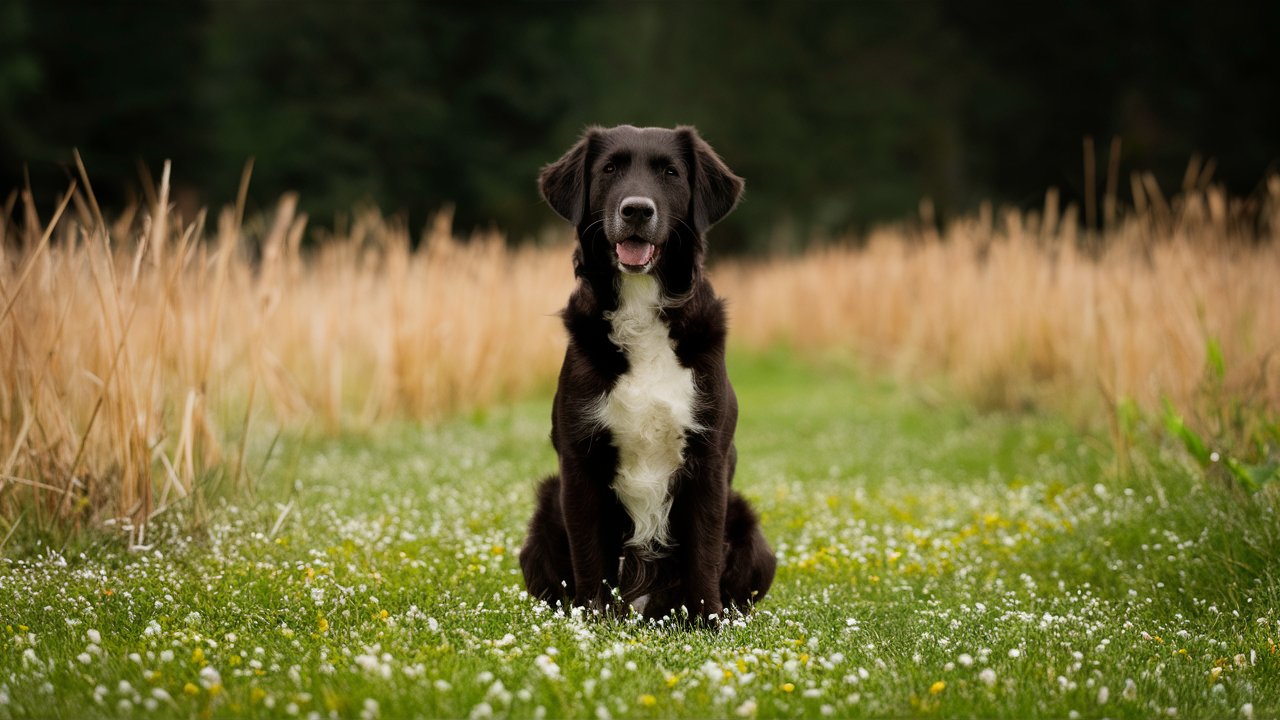
Conclusion
Flat-Coated Retrievers are a unique and delightful breed, offering a blend of energy, intelligence, and affection. Whether as a hunting companion, a therapy dog, or a beloved family pet, they bring joy and companionship to those fortunate enough to have them in their lives. With proper care, training, and love, a Flat-Coated Retriever can be a loyal and cherished member of your family for many years.
References
- American Kennel Club: Flat-Coated Retriever
- Flat-Coated Retriever Society of America
- Veterinary Partner: Common Health Issues in Flat-Coated Retrievers
